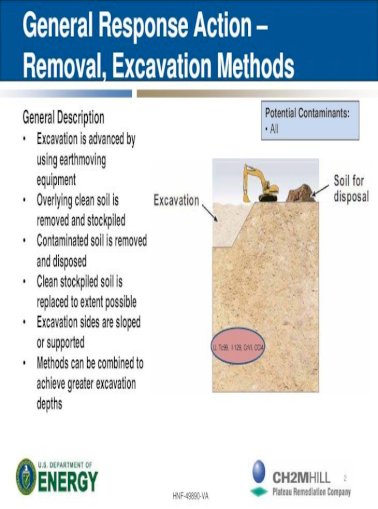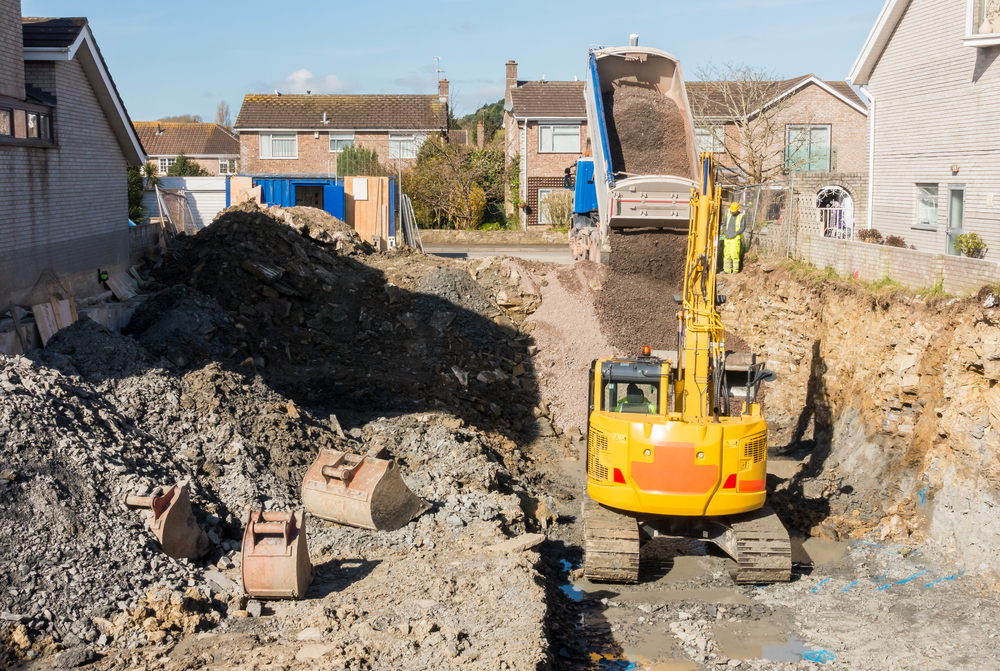Excavation Contractors Near Me for Beginners
Wiki Article
Getting The Excavating Contractors To Work
Table of ContentsThe 10-Minute Rule for DemolitionThe Ultimate Guide To General ContractorGeneral Contractor Things To Know Before You Get ThisAll about Mini ExcavatorEverything about Excavation Companies


Scrapers or Pans excavate dirt in one location, haul and dispose the dirt in an additional place (excavating contractors). It is tough to match the efficiency of scrapers for cut/fill soil procedure if the haul range is less then a mile. Scrapers are usually pulled by a rubber tire wheel tractor and are occasionally pushed with the cut area by a bulldozer.
There are numerous times that scrapers are not utilized for site grading as well as a dump truck is used: the haul might be to long, the haul might cross roads where scrapes are not permitted, acid rock might be encountered, equipment accessibility, etc. Dispose trucks remain in typical use as well as most likely require little discussion.
"Rock body" beds, on the various other hand, have no tailgates as well as can dump any kind of size rock, although their volume ability is reduced. Compaction Equipment increases the thickness of the dirt and in some instances gives a smooth, rolled surface.
All about Mini Excavator
From an easy test pit to percussion boring to core boring the proprietor has significantly extra costly options that yield significantly far better information regarding the site underground. For example, the Owner on a 100,000 SF structure job might authorize twenty dull locations with split spoon dirt examples taken up until rock is gotten to and after that core samples of rock.Recognizing the kind and also high quality of rock (from the core samples) and location of rock (from the dirts boring) is a genuine advantage in jobsite preparation. Alternatively, the Owner of a 100,000 SF building might choose to wage no geotechnical screening whatsoever. The choice about geotechnical screening is typically made by a Proprietor without any input from the Building and construction Supervisor.
A knowledge of the approximate place of the rock helps the Construction Manager to intend the series of steps complying with rock excavation. If rock is in one corner of a huge building job, for instance, the earth excavation can begin at the opposite end of the structure in order to start structure work soonest.
Starting the foundation work early would be a good concept if the rock can be eliminated by tearing. However, if the rock is very tough as well as requires substantial blasting, it may be sensible to hold foundation job till the blasting is completed. The Building Manager should coordinate these kinds of choices and also make use of all the technical day available.
Some Known Factual Statements About Excavating Contractors
Unclassified excavation specifies that all rock or various other unexpected products (omitting unsafe materials) experienced in the sitework will be the duty of the Specialist at no change in agreement price. An unclassified excavation is easier from a book-keeping standpoint and also places the obligation for geotechnical conditions onto the Sitework Professional.How Water Influences Sitework? It's amazing what a read here heavy rain can do to a building and construction job. Before the rain, the site might be dry, hefty tools efficiently relocating planet, the various other trades smoothly performing their work. Within hrs the task can be a careless, mud-hole with worker efficiency cut to regarding 10%.
In many areas of the world, the Building Manager have to remember an easy truth: IT WILL CERTAINLY RAINFALL. Good planning can minimize the damages as well as interruption of a hefty rainfall to a jobsite. Often the excavation and also grading is delegated the Sitework Specialist (as well as their Foremen is liable to manage and also direct the hefty equipment as well as drivers).
The Building Supervisor have to be continually aware of what rainfall will do to the project website. It is not unusual for the Sitework Supervisor to work their hefty devices for maximum efficiency and wish it does not rain. One of the visite site best means to prepare for rainfall is to slope all grades to drain pipes as well as to smooth rolled the surface prior to a Visit Your URL rainfall.
The 20-Second Trick For Concrete Contractors
The Building Manager must be well-balanced sufficient to insure that hefty rainfall does not quit working on the project much longer than required. Daily discussions with Sitework Foremen may be needed to accomplish this objective. At any time excavation is needed below the existing water level on a job, the process of dewatering should be thought about.In an absolutely natural dirt, the water takes a trip so slowly through the clay or silt that dewatering is not normally necessary for the reasonably brief time of excavation. Dewatering may be required for a solitary ground excavation or for an entire project website. One of the most typical dewatering techniques are trench drains, deep wells and also well factors.

Ground water seepage can additionally be decreased by cutoff techniques such as sheet piling. High dewatering expenses have actually faded the revenue margins on far also lots of tasks.
This option should constantly be thought about when examining the prospect of dewatering. Undoubtedly the alternative is just practical if gravity can run the water to reduced ground. Trench drains pipes can be cut with a backhoe as well as loaded with a coarse, granular material (# 4 stone as an example), yet treatment must be exercised in selecting the water electrical outlet kind and place.
8 Simple Techniques For Concrete Contractors
A siphon, by meaning, uses air pressure to lug water from one elevation, up over a challenge, to a lower altitude. The pipes in a siphon system must be impermeable and some resourcefulness is commonly required to entirely load the siphon pipeline. The siphon pipe have to be complete for the siphon to begin.A deep well contains a pump, hose pipe and also a vertical well casing. The pump consumption is at the bottom of the well case (typically some smashed stone is put down there as a filter tool) (excavator). The water is pumped up the pipe, out of the well casing, and also to a suitable discharge location.
In a crude sand, for example, a big area can be pumped to near the pump intake altitude. A less absorptive soil, on the other hand, decreases the performance of a deep well. Because the pump is usually at the end of the deep well, there are no height restrictions as a result of vacuum lift, and deep wells can reduce the groundwater over 50 feet.
On the bottom of the wellpoint there is a 2 foot long display as well as valve, water jets out of this shutoff and produces a hole right into which the wellpoint pipeline can be decreased. This opening is often made a larger diameter (as an example 10 inches) to permit a coarse sand backfill to assist filter the water (excavator).
Report this wiki page